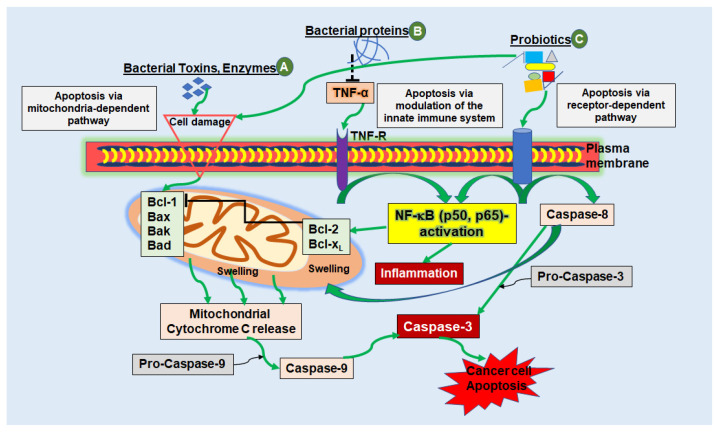Figure 1.
Schematic diagram showing the mechanisms of apoptosis triggered by bacterial peptides in cancer cells. (A) Bacterial toxins, secreted by various bacterial strains can cause apoptosis via the mitochondria-dependent pathway by causing cell injury, for example, by cell membrane pore formation. Induction of the intrinsic pathway leads to activation of pro-apoptotic proteins (Bcl-1, Bad, Bax, Bak), which in turn stimulates the release of cytochrome c molecules from the mitochondrial intermembrane space into the cytosol. Cytochrome c, together with Caspase-9 forms a complex called the “apoptosome”, finally stimulating executioner caspases (e.g., Caspase-3) leading to cancer cell apoptosis. (B) Bacterial proteins and peptides can have a modulatory impact on cytokines such as TNF-α, resulting in activation or blockage of NF-κB. With suppression of NF-κB, which stimulates anti-apoptotic proteins Bcl-2 and Bcl-xL, which in turn regulates apoptosis by blocking cytochrome c release, pro-apoptotic Bax and Bak-proteins remain stimulated and apoptosis is induced. (C) Besides stimulating the intrinsic pathway of apoptosis, probiotics are capable of apoptosis induction through stimulation of the extrinsic receptor-dependent pathway. Here, so called cell death receptors, such as TNF-R, bind to natural ligands, whereby initiator Caspase-8 and -10 are activated to cleave further downstream caspases, such as Caspase-3, which in turn induces cell apoptosis [41,42,43,44,45].

